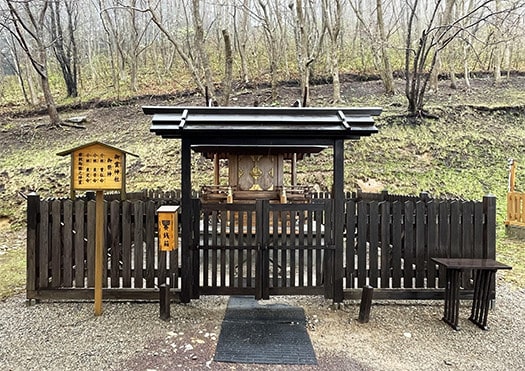

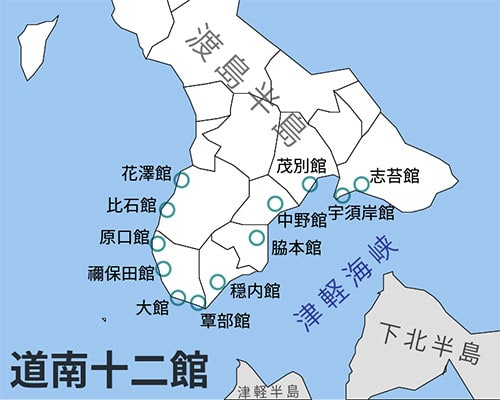
ntent/uploads/2024/05/0973-4-3.jpg" alt="" width="500" height="400" class="alignnone size-full wp-image-44185" />
さてふたたび函館市の東側海岸線にある「志苔館」探訪記の続篇。
この志苔館のさらに東側約10kmほどに明治になって造営された「石崎地主海神社」がある。この神社の「末社」というようなカタチで「御霊」神社が祀られていて、そこに志苔館の館主である小林氏の名前が記載されている。また、志苔館に関連して「道南十二館」の1456年当時の館主たちの名が、祭神として記載されている。
この神社は明治の末年ころに比較的早くから北海道移住者が多かった「石崎」の地で、宮城県からの移住者が故地の神を祀ったとされている。そういう神社がなぜ志苔館・小林氏を祀るのかについてはよくわからなかった。というか、神社で由緒など質問させていただいたあとになって、上の写真の「御霊神社」をみつけたというところなのです。あとの祭り。
ただ、志苔館現地では「慰霊碑」などが建っているのだけれど、その祭祀主催者としてこの神社名が記載されていたので、函館市による志苔館本格調査に際して、地神鎮撫の意味合いから、近接の神社が名乗りを上げてこのように末社まで造営したものだろうかと推測された。
ただ、北海道の神社施設で一挙に歴史年代が800年も遡る末社というのは稀有。
志苔館の館主一族の小林氏は、あまり資料はないけれど断片情報としては「上野国」が出自とされている。南北朝・室町幕府の頃、上野国守護の山名氏が上野国にいた鎌倉時代のころからの譜代の重臣として小林氏の名がある。山名氏が初めて守護に任ぜられた延元2年/建武4年(1337年)の山名時氏の伯耆守護補任の際に上野国を離れるとき、代理として守護職を預かった守護代が小林左京亮国範であったとされている。
さて、上野国の「地場勢力」であった小林氏がどうしてこの蝦夷地の志苔館まで逃れ来たったのか。
当時1300年代にはこの地域には津軽安藤氏がすでに勢力を持っていたなか、平和的にこの志苔館に入植したと思われる。
上野国からいきなり北海道島への移住というのは非常に不可思議。
ひとつの推理としては、鎌倉幕府成立時期に頼朝は奥州藤原氏を殲滅したけれど、それは「北方交易利権」というものに着目してのことだといわれる。事実幕府成立後、この大きな利権は北条家が独占していくことになる。
そのなかで奥州藤原氏との関係も指摘される「安藤氏」と、幕府側としての上野・小林氏がなんらかのつながりを持っていた可能性。奥州遠征時、関東武士団は大挙して出兵したけれど、そういう「利権」への強い執着があったのではないか。
北海道が舞台になる日本中世史、当事者側意識も刺激されるので、興味を持って忍耐強く探究したいと思っております。読者のみなさんからも情報があれば、ぜひお教えください。
<なお、早朝から遠出して多忙だったので「校正」に時間が掛けられず、数カ所、わかりにくい、書き間違い箇所がありましたので修正いたしました。>
English version⬇
[To the Shikokeikan of the "Kobayashi Clan of Ueno Province" of the Southern Dynasty at the end of the 1300s.
Traces of a medieval warrior clan, a rarity in Hokkaido. The traces of a medieval warrior clan, rare in Hokkaido, may be revealed little by little by exploring the vivid "interest structure". ......
Once again, this is a continuation of my visit to Shikokan, located on the eastern coastline of Hakodate City.
About 10 km further east of Shikokan is the Ishizaki Jishu Kaijinsha Shrine, which was built in the Meiji era (1868-1912). The "Goryo" shrine is enshrined in the form of a "branch shrine" of this shrine, and the name of Kobayashi, the owner of Shikokan, is written there. In addition, the names of the owners of the "Donan Twelve Halls" in 1456 are listed as deities in connection with the Shikokan.
It is said that this shrine was built around the end of the Meiji period (1868-1912) in "Ishizaki," a place where many people emigrated to Hokkaido relatively early on, and that emigrants from Miyagi Prefecture enshrined the deity of the deceased's hometown. It was not clear as to why such a shrine would worship the Shikokan and Kobayashi clans. It was only after I asked some questions about the shrine's history that I found the "Goryo Shrine" in the photo above. It was too late.
However, there is a "cenotaph" at the Shikokan site, and the name of this shrine was listed as the organizer of the rituals, so I assumed that when Hakodate City conducted a full-scale survey of Shikokan, a nearby shrine came forward and built a shrine to serve as a local deity.
However, it is rare to find a shrine facility in Hokkaido with a history dating back 800 years all at once.
The Kobayashi clan of the Shikokan family is said to have originated in "Ueno Province," according to fragmentary information, although there is not much documentation available. The name of the Kobayashi clan has been known as an important vassal of the Yamana clan since the Kamakura period, when the Yamana clan was the guardian of Ueno Province during the Nanbokucho and Muromachi shogunate periods. When Yamana Toki left Ueno Province in 1337 (Engen 2/Kenmu 4), the first time the Yamana clan was appointed as a guardian of the province, Kobayashi Sakyo Ryo Kuninori was appointed as a deputy guardian.
Why did the Kobayashi clan, a "local power" in Ueno Province, flee to Shikokendate in Ezo?
It is thought that they settled peacefully in Shikokukan while the Tsugaru Ando clan was already in power in the region in the 1300s.
The sudden migration from Ueno Province to Hokkaido Island is very strange.
One theory is that Yoritomo's extermination of the Oshu Fujiwara clan during the establishment of the Kamakura shogunate was based on his "northern trading interests. In fact, after the establishment of the Shogunate, this major interest was monopolized by the Hojo family.
It is possible that the Ando clan, which is said to be related to the Oshu Fujiwara clan, had some kind of connection with the Ueno Kobayashi clan on the shogunate side. The Kanto samurai group went to war in large numbers during the Oshu expedition, but it is possible that they were strongly attached to such "interests".
I would like to explore with interest and patience the medieval history of Japan, which is set in Hokkaido, because it stimulates my awareness of the people involved. If you, the readers, have any information, please let me know.










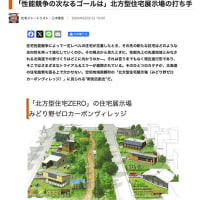
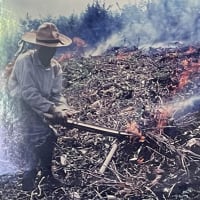
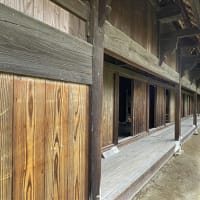
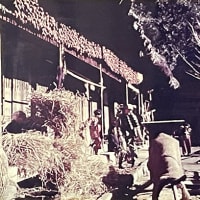

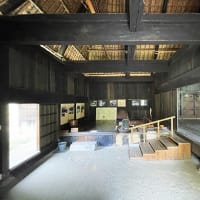
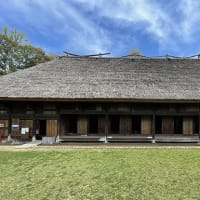
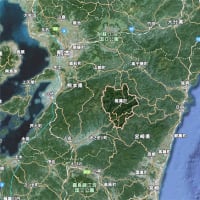
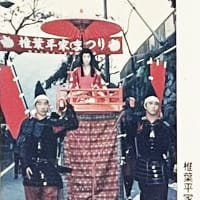
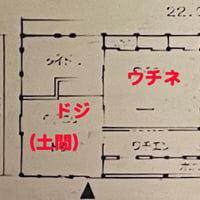
お教えください。
また「南北朝・室町幕府の当時、室町期の上野国・守護山名氏が上野国にいた鎌倉時代以来の譜代の重臣で、山名氏が初めて守護に任ぜられた延元2年/建武4年(1337年)の山名時氏の伯耆守護補任の際の守護代が小林左京亮国範であったとされている」もよくわかりませんです。
とくに「延元2年/建武4年(1337年)の山名時氏の伯耆守護補任の際の守護代」のように「の」が大連発ではなにがなんだか…